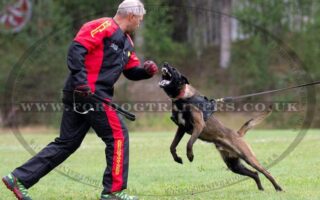The Art of Kennel Training: A Path to Harmony Between Dogs and Their Humans
In the bustling world of dog ownership, where joy and companionship abound, there lies a foundational practice that often goes overlooked: kennel training. Not merely a practical necessity, this technique serves as an essential building block for fostering a positive relationship between humans and their canine companions. Helping to create a safe haven for dogs, kennel training can alleviate anxiety, promote good behavior, and enhance the overall well-being of our furry friends. As we delve into the principles and practices of kennel training, we’ll explore its numerous benefits, address common misconceptions, and share expert tips to ensure a smooth journey for both pet and owner. Join us as we unlock the secrets behind this invaluable practice and set the stage for a harmonious life together.
Table of Contents
- Understanding the Purpose and Benefits of Kennel Training
- Creating a Positive Kennel Environment for Your Dog
- Essential Techniques for Successful Kennel Training
- Common Challenges and How to Overcome Them in Kennel Training
- Q&A
- The Conclusion
Understanding the Purpose and Benefits of Kennel Training
Kennel training serves as a valuable tool in fostering a sense of safety and security for pets. By providing a designated space, a kennel becomes a personal retreat for dogs, where they can relax and feel at ease. This training method helps establish a routine, which is crucial for developing good manners and behavior. It is especially useful for housebreaking, as dogs instinctively avoid soiling their sleeping area. When introduced appropriately, kennel training can significantly decrease anxiety and stress in pets, making traveling or downtime more manageable.
Moreover, the benefits extend beyond mere housebreaking. The practice can aid in behavioral management and can be particularly effective in challenging situations. Here are some advantages of kennel training:
- Provides a Safe Haven: Offers dogs a space to retreat during overwhelming moments.
- Facilitates Organization: Encourages a tidy home environment by preventing mess when owners are not around.
- Enhances Mental Stimulation: Keeps dogs engaged with toys and treats inside the kennel.
- Promotes Consistent Habits: Supports regular feeding and bathroom schedules.
| Benefit | Description |
|---|---|
| Reduces Separation Anxiety | Helps dogs adapt to time spent alone, reducing stress levels. |
| Facilitates Travel | Prepares dogs for safe travel in cars or planes. |
| Establishes Boundaries | Teaches pets where they can and cannot go within the home. |
Creating a Positive Kennel Environment for Your Dog
Creating a welcoming and serene space for your dog’s kennel is essential for fostering a positive environment. Start by ensuring the kennel is clean and well-ventilated. Incorporate comfortable bedding and toys that can help your dog feel more at ease. Regularly assess the kennel to maintain it as a safe haven by eliminating any potential hazards. Consider following these key practices to enhance your dog’s experience:
- Consistent Schedule: Establish a routine for feeding, playtime, and training to help your dog feel secure.
- Positive Reinforcement: Reward calm behavior with treats or affection when they enter the kennel.
- Enrichment Activities: Provide toys and puzzles that keep mental stimulation high and boredom at bay.
Additionally, incorporating personal touches can make the kennel feel more like home. Customize the space with familiar smells by adding an item of your clothing or a favorite blanket. This sense of ownership can significantly impact how your dog perceives their environment. You might also create a simple chart to track and manage your dog’s kennel time effectively:
| Time of Day | Kennel Activity |
|---|---|
| Morning | Feeding and short walk |
| Afternoon | Playtime and socialization |
| Evening | Training and quiet time |
Essential Techniques for Successful Kennel Training
Creating a positive association with the kennel is pivotal for effective training. To ensure your dog views the kennel as a safe haven, start with gradual introductions. Let your dog explore the kennel at their own pace, and avoid forcing them inside. Rewarding your dog with treats or praise when they enter willingly fosters a sense of comfort. Additionally, consider implementing the following techniques:
- Positive Reinforcement: Use treats and verbal praise to reinforce good behavior.
- Short Sessions: Begin with brief stays in the kennel, gradually increasing the duration as your dog adjusts.
- Comfort Items: Place familiar toys or blankets inside the kennel to make it more inviting.
- Consistent Commands: Use the same command each time to signal kennel time, enhancing understanding.
Monitoring your dog’s response to the kennel training is crucial for ongoing adjustments. Always maintain a calm demeanor during training sessions; dogs can pick up on your anxiety, which may lead to stress. If they express reluctance, it’s important to reevaluate your approach. Consider using a structured schedule to establish routines. Creating a table for kennel time can help track progress and identify patterns:
| Day | Kennel Duration | Comments |
|---|---|---|
| Monday | 10 minutes | Showed interest in toys. |
| Tuesday | 15 minutes | Calm behavior noted. |
| Wednesday | 20 minutes | Slight hesitation, redirected attention. |
| Thursday | 25 minutes | Entered willingly. |
| Friday | 30 minutes | Comfortable and relaxed. |
Common Challenges and How to Overcome Them in Kennel Training
Many pet owners encounter hurdles while kennel training their dogs, which can stem from a variety of factors. One common challenge is a dog’s fear or anxiety about being confined, often resulting in barking, whining, or even destructive behavior. To counter this, it is essential to create positive associations with the kennel. Gradually introducing the dog to the space by leaving the door open and rewarding them for entering on their own can help. Additionally, providing cozy bedding and safe toys can transform the kennel into a sanctuary rather than a punishment.
Another frequent issue is the owner’s inconsistency during the training process. Dogs thrive on routines, and mixed signals can confuse them, making it difficult for them to understand what behavior is expected. Maintaining a consistent schedule for meals, potty breaks, and playtime is crucial. Establishing clear commands and sticking to them will help reinforce good behavior. Here’s a simple checklist for creating a successful kennel training routine:
| Action | Timeframe | Note |
|---|---|---|
| Introduce kennel | First few days | Keep door open |
| Feed meals in kennel | Daily | Encourages positive association |
| Short confinement sessions | Days 4-10 | Gradually increase duration |
| Consistent potty breaks | Daily | Praise after outdoor potty |
Q&A
Q: What is kennel training, and why is it important?
A: Kennel training is the process of teaching your dog to feel comfortable and secure in a kennel or crate. It plays a crucial role in their development, providing them with a safe space of their own and aiding in house training. When done correctly, kennel training can help reduce anxiety during travel and establish a reliable routine for your furry friend.
Q: At what age should I start kennel training my dog?
A: While it’s never too late to start kennel training, the ideal time to introduce it is when your puppy is around 8 weeks old. Puppies are often more adaptable and eager to learn. However, older dogs can also benefit from kennel training; it may just take a bit more patience and consistency.
Q: How do I choose the right kennel for my dog?
A: Selecting the right kennel involves considering your dog’s size, breed, and personality. The kennel should be spacious enough for your dog to stand, turn around, and lie down comfortably. Look for kennels that are sturdy, easy to clean, and have good ventilation. If your dog is still growing, factor in their potential size when making your choice.
Q: What are some tips for successfully kennel training my dog?
A: Start with positive associations. Place treats, toys, or a cozy blanket in the kennel to make it inviting. Gradually introduce your dog to the kennel by leaving the door open and allowing them to explore. Begin with short periods of confinement, gradually increasing the time as they become more comfortable. Always use praise and rewards to reinforce desirable behavior.
Q: How long can my dog stay in the kennel?
A: The time your dog spends in the kennel should match their age and bladder control. Puppies typically can hold it for one hour per month of age, up to a maximum of 8 hours. Adult dogs can usually handle being in their kennel for 4 to 6 hours during the day. It’s crucial to never use the kennel as a punishment; instead, promote it as a safe haven.
Q: What should I do if my dog seems anxious in the kennel?
A: Anxiety in the kennel can manifest as whining, barking, or scratching at the door. If this happens, try to soothe your dog by using a calming voice or giving them a favorite toy. Gradually expand their time in the kennel in small increments, and consider incorporating training exercises that help build their confidence. Patience is key to helping your dog overcome kennel anxiety.
Q: Can kennel training help with behavioral issues?
A: Yes, kennel training can assist in correcting certain behavior problems. A well-trained dog understands boundaries and routines, which can reduce issues like destructive chewing or excessive barking. Additionally, having a designated space for your dog can help calm them down during stressful situations or when visitors come to the house.
Q: Are there any common misconceptions about kennel training?
A: One common misconception is that kennel training is cruel or confining. In truth, a kennel can be a sanctuary for dogs, offering them their own safe space. Another myth is that kennel training is only for puppies; in reality, dogs of all ages can benefit from this practice. With the right approach, kennel training promotes security and structure in your pet’s life.
Q: How can I tell when my dog is ready to be out of the kennel?
A: Signs that your dog is ready to spend more time outside the kennel include exhibiting calm behavior, showing confidence during training, and successfully going longer stretches without accidents. Transitioning gradually and monitoring your dog’s reactions will help you determine the right timing to allow more freedom. Always ensure they are supervised during this new phase of their independence.
The Conclusion
kennel training stands as a bridge between the wild instincts of our canine companions and the structure of domestic life. By fostering a safe, secure environment, we promote not only good behavior but also a deeper bond with our pets. While the path of training may have its challenges, the rewards are immeasurable—peace of mind for you and a sense of security for your dog. As you embark on this journey, remember that patience and consistency are your best allies. In nurturing your pet’s understanding of their space, you cultivate a home where both humans and dogs can thrive together. So, grab those treats, put on a smile, and transform your kennel into a haven of learning and love—after all, every successful journey starts with a single step. Happy training!


